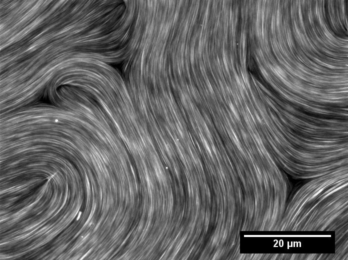
Active Soft Matter

Active soft matter is a new paradigm that can be considered as an extension of traditional soft materials where dynamic self-assembly emerges through the consumption of stored or ambient free-energy. For example, active gels can be obtained by a suitable combination of cytoskeleton proteins.
When polymerized tubulin filaments are actively cross-linked by kinesin clusters, organized behavior emerges at the expense of the continuous consumption of ATP. The presence of a depletant agent in the mixture can be used to concentrate this active material towards a bio-inert fluid interface, resulting in the emergence of quasi-two-dimensional nematic order. The filaments spontaneously fold and buckle forming ±1/2 defects similar to those found in liquid crystalline materials. We study the rich phenomenology resulting from the hydrodinamic coupling between the passive fluid and the organized active gel, where defect proliferation and dynamics are directly affected by the concentration of ATP in the active material and by the rheology of the passive fluid. Interfacing the active fluid with a passive liquid crystal allows to take advantage of the high birefringence of the latter to use it as a reporter of interfacial dynamics and also as a means to command the active material with external fields.
